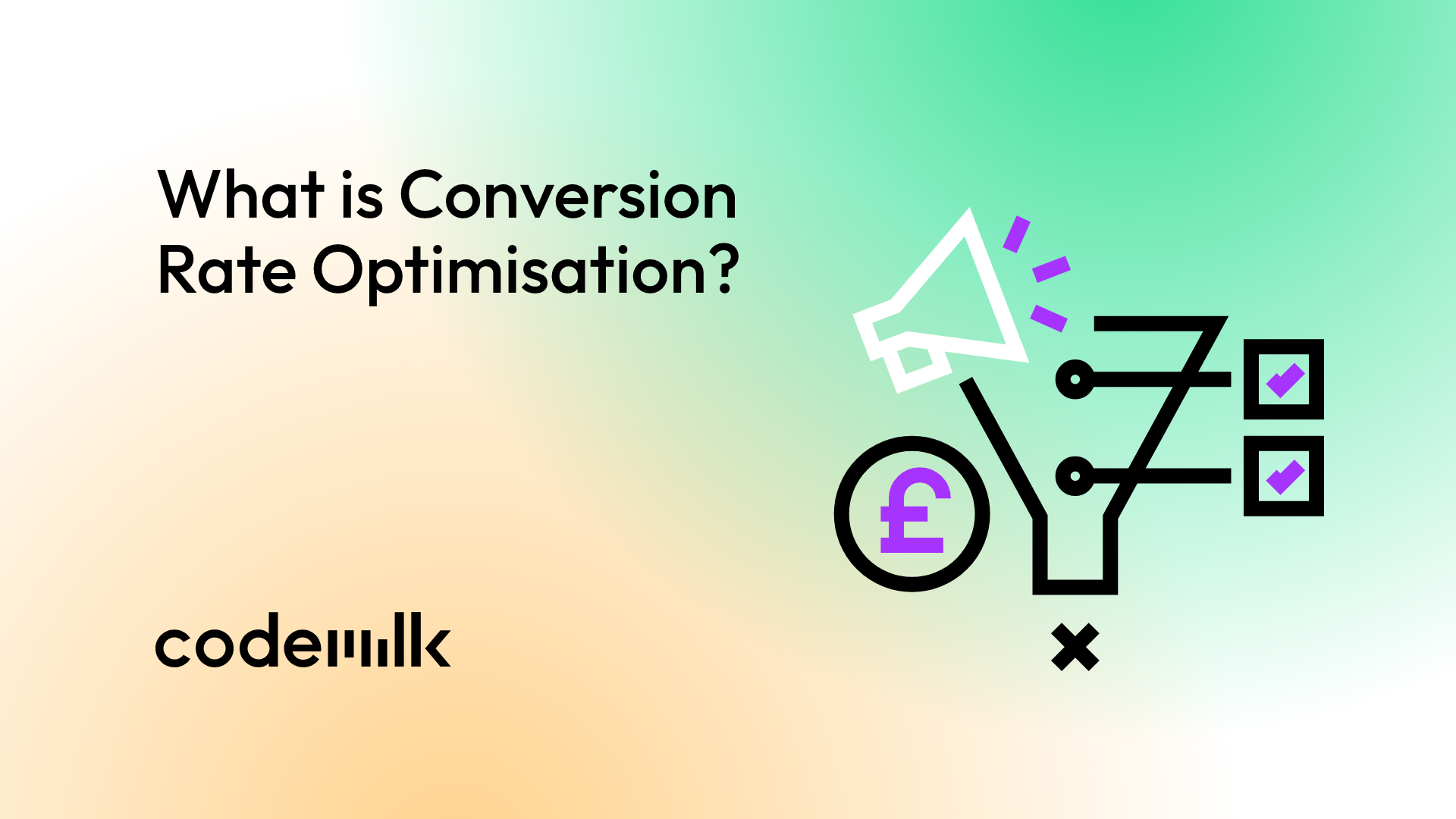What is Conversion Rate Optimisation?

In digital marketing we often discuss how well a campaign is performing, or whether a website is working as hard as it can. But what does that mean?
In digital marketing we’re always aiming to do three things: to grow, engage and convert. Attracting traffic is really important, but that’s only half the battle. A high performing campaign or website is one that converts. For your business to make any money, you have to make sure you’re converting that traffic into tangible results.
That's where conversion rate optimisation, otherwise known as CRO, comes in.
Let's look a bit closer at conversion rate optimisation and what this means for your website. Then we’ll look at how you can use CRO strategies to optimise your website to transform your leads into loyal customers.
What’s your conversion rate?
First, conversion rate. This is the percentage of leads who complete a desired goal, like making a purchase or filling out a form.
A campaign might target a single conversion act, whereas a website will have multiple conversion goals.
On your website, conversion rates measure how well your website is converting the visitors on your webpages.
You calculate your conversion rate by dividing the number of conversions by the number of visitors then multiplying that number by 100 to get a percentage.
Number of conversions
—---------------------------- x 100
Number of visitors
Obviously we want the conversion rate to be as high as possible.
Conversion rate optimisation then, is the process of improving websites or campaigns to lead users to a desired action, bringing that percentage up.
It involves analysing user behaviour and implementing strategies to enhance the user experience and encourage more conversions.
Ongoing conversion rate optimisation will maximise sales and deliver the best ROI from your marketing spend.
What’s a good conversion rate?
There isn’t a simple answer. But, it’s useful to benchmark according to your industry.
For instance, one study last year put average conversion rates across various industries at 2.9%, but break it down by industry and professional services were at 4.6% while average rates in B2B ecommerce were much lower at 1.8%.
Webpages can differ from other marketing sources for how much they convert.
The value of what you're selling and its typical lead time will also influence this. Conversion rates in ecommerce for instance are higher for general apparel than for luxury handbags. That doesn't mean webpages for the handbags are underperforming.
How can I optimise my website for conversion?
Website CRO has a broad scope, because you’re targeting multiple conversion points. That means you need to consider your overall website and user journey. To optimise your website for conversions, you need to assess your website's design, content, and functionality.
You want to improve the efficiency of your user’s journey, reducing friction and guiding visitors smoothly and intuitively towards completing desired actions.
Key strategies include comprehensive UX and content strategies, enhancing user experience, optimising keywords, and refining pages to meet user needs.
Optimisation is an ongoing process, so it's worth implementing continuous reviews of data, behaviours, and customer journeys to identify areas for improvement.
It’s all about ensuring your website’s performance is continually optimised to connect your audience to the outcomes you aim to achieve.
CRO…SEO…what’s the difference?
SEO focuses on driving traffic to your website by improving its visibility in search engines, while CRO focuses on converting that traffic into desired actions once visitors are on your site.
They share some key metrics but optimise for different purposes, and you need both.
If your website is a car, then SEO is like fuelling up, while CRO is like fine-tuning the engine. Optimise the engine and you use every gallon of fuel more efficiently.
By investing in CRO, your website will be optimised to deliver the best return on investment from your traffic driving marketing spend. That includes SEO, that includes all your inbound marketing. This ensures your website traffic works harder to deliver results against your business objectives.
Final thoughts
It’s important to keep reviewing how well your website is converting, implementing CRO into your overall digital strategy.
At Code Milk, our CRO approach is founded in data and research. We employ a structured methodology to discover the areas of your website where you may be losing traffic. Then we work with you to create a tailored maturation model, roadmapping a testing plan to improve engagement with your website’s content and ultimately your website’s conversions. For more information, learn more about our services and see what our digital marketing agency can do for you today.


